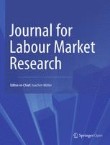This journal has changed to fully open access publishing in 2016 and publishes only fully open access articles. All articles published as of 2009 are freely available on SpringerLink.
For articles published before 2009, please visit the IAB website, where you can also download these articles free of charge.
